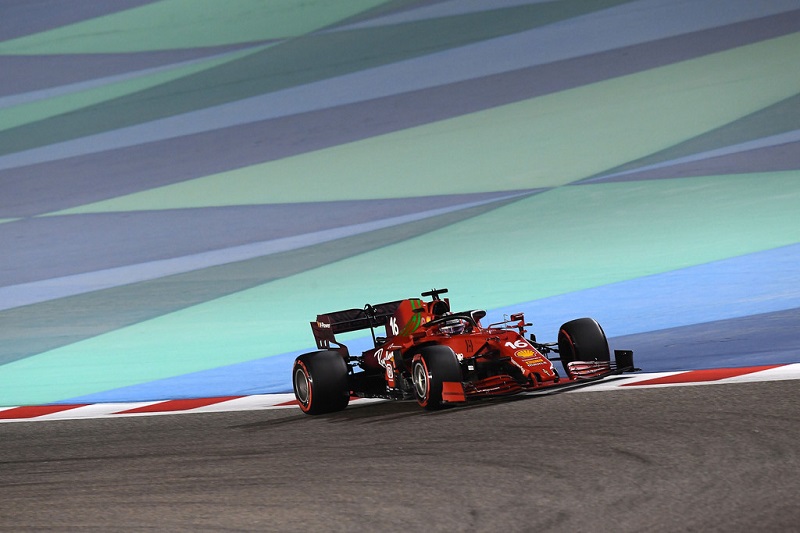Bullish indicating open at $55-$60, IPO prices at $37
On Tuesday, RBC Capital Markets reiterated its Outperform rating and $500.00 price target for Ferrari (NYSE:RACE) shares. Currently trading at $466.46, Ferrari’s stock sits within analyst targets ranging from $428.90 to $620.25. According to InvestingPro data, the company maintains excellent financial health with an overall score of "GREAT," supported by strong profitability and growth metrics. The firm’s analyst highlighted Ferrari’s first-quarter earnings before interest, taxes, depreciation, and amortization (EBITDA), which, although falling below RBC’s expectations, was still robust enough to surpass consensus estimates. Ferrari’s adherence to its 2025 guidance was also noted, an outcome that RBC had anticipated. The luxury automaker typically updates its guidance later in the year, which could have led to some investor anticipation for an early upgrade.
Ferrari’s Q1 performance was underpinned by sequential increases in Daytona deliveries, estimated at approximately 70 for Q1/25, compared to 46 in Q4/24. The company’s robust performance is reflected in its impressive 50.13% gross profit margin and 11.83% revenue growth over the last twelve months. InvestingPro has identified 14 additional key investment factors for Ferrari, available to subscribers. Sponsorship revenues are expected to show year-over-year improvements, benefiting from easier comparisons as a result of a partnership that began in May 2024. Additionally, strong free cash flow in Q1 is anticipated, fueled by initial payments for the F80 model, which is slated for delivery starting in Q4/25.
For the full year, Ferrari is guiding for EBITDA of at least €2.68 billion, a figure that both RBC and the consensus estimate exceed, with projections closer to €2.8 billion. Despite expectations for Daytona volumes to decrease over the following quarters, the ramp-up of SF90XX and 12Cilindri vehicle production is projected to offset the negative mix effect.
In response to tariffs, Ferrari has announced a policy update indicating a maximum price increase of 10% on certain models imported to the United States. The pricing for the Ferrari 296, SF90, and Roma families, as well as all models imported before April 2, 2025, will remain unchanged. However, the company and its dealers will absorb the full 25% tariff on certain models being phased out and pass through the full tariff cost to consumers for most other vehicles sold in the U.S.
RBC’s analysis suggests that the tariff policy could result in a €40 million reduction in EBIT for 2025. The cost of goods sold (excluding R&D), estimated at around €650 million for imports to the U.S. from April to December 2025, will be impacted by the tariff changes. The firm anticipates that consumers will bear the full 25% tariff for the majority of Ferrari vehicles sold in the U.S. market.
In other recent news, Ferrari has been actively navigating challenges posed by tariffs and market conditions while maintaining its financial targets. The company has announced a policy update allowing up to a 10% price increase on selected models shipped to the United States to mitigate tariff impacts. RBC Capital and Bernstein both maintain an Outperform rating on Ferrari, with price targets set at €500 and $575 respectively, reflecting confidence in the company’s strategy and performance. UBS has adjusted its price target to $520 from $584, maintaining a Buy rating, citing Ferrari’s robust demand and strategic pricing as key strengths. Kepler Cheuvreux upgraded Ferrari’s stock rating from Hold to Buy, maintaining a EUR 470 price target, viewing the recent stock price decline as an opportunity. Barclays (LON:BARC) also upgraded Ferrari to Overweight, with a new price target of EUR 485, noting the company’s strong financial targets for 2025 and its resilience in the European market. Analysts generally agree on Ferrari’s strategic pricing decisions and its ability to maintain demand despite tariff challenges. Ferrari’s continued commitment to its financial goals and strategic adjustments in response to external pressures have been well-received by analysts, underscoring the company’s strong market position.
This article was generated with the support of AI and reviewed by an editor. For more information see our T&C.
